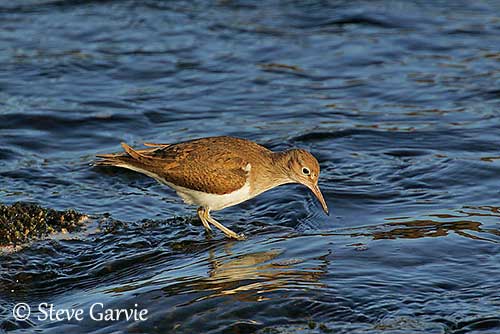
Fr: Chevalier guignette
Ang: Common Sandpiper
All: Flußuferläufer
Esp: Andarríos Chico
Ita: Piro-piro piccolo
Nd: Oeverloper
Sd: Drillsnäppa
Photographers:
John Anderson
John Anderson Photo Galleries
José Luis Beamonte
Pájaros de España
Didier Buysse
Vision d’Oiseaux
Steve Garvie
RAINBIRDER Photo galleries & Flickr Rainbirder
Nicole Bouglouan
PHOTOGRAPHIC RAMBLE
Text by Nicole Bouglouan
Sources:
HANDBOOK OF THE BIRDS OF THE WORLD Vol 3 by Josep del Hoyo-Andrew Elliott-Jordi Sargatal - Lynx Edicions - ISBN : 8487334202
SHOREBIRDS by Peter Hayman, John Marchant and Tony Prater – Christopher Helm – 1986 – ISBN: 0747014035
GUIDE DES LIMICOLES de D. Taylor - Delachaux et Niestlé - ISBN : 2603014080
THE COMPLETE BOOK OF BRITISH BIRDS – Written by “Royal Society for the Protection of Birds” experts - Préface de Magnus Magnusson - Michael Cady- Rob Hume Editors - ISBN: 0749509112
ENCYCLOPEDIE DES OISEAUX DE FRANCE ET D’EUROPE – de Peter Hayman et Rob Hume - Flammarion – ISBN : 2082009920
THE HANDBOOK OF BIRD IDENTIFICATION FOR EUROPE AND THE WESTERN PALEARCTIC by Mark Beaman, Steve Madge - C.Helm - ISBN: 0713639601
Animal Diversity Web (University of Michigan Museum of Zoology)
Pájaros de España (JL Beamonte)
Sungei Buloh Wetlands Reserve (Michael Mastaller)
Birds in backyards (Birds Australia and Australian Museum)
Biodiversity Explorer – The Web of Life in Southern Africa
What Bird-The ultimate Bird Guide (Mitchell Waite)
Department of Sustainability, Environment, Water, Population and Communities
Common Sandpiper
Actitis hypoleucos
Charadriiformes Order – Scolopacidae Family
INTRODUCTION:
The Common Sandpiper is known for its bobbing walk, its flickering flight and the distinctive white “peak” in front of the wing.
This Old World wader frequents a variety of wetland habitats, both inland and coastal, although it usually avoids open tidal mudflats.
The Common Sandpiper is migratory and moves S overland on broad front, crossing deserts and mountains, usually at night. This bird is a small, solitary wader, but large flocks gather at nightime roosts, sometimes on moored boats.
DESCRIPTION OF THE BIRD:
Biometrics:
Length: 19-21 cm
Wingspan: 38-41 cm
Weight: 33-84 g (average 50 g)
The Common Sandpiper adult has greenish-brown upperparts with fine darker streaks, including crown, nape and hindneck. In flight, we can see a white wingbar extending from inner primaries to wing base, and a white trailing edge formed by the tips of secondaries and inner primaries. The uppertail is like the upperparts, but the outer rectrices are white and finely barred brown.

On the underparts, chin, throat and centre of breast are white streaked brown. Cheeks, neck sides and breast sides are brownish with dark brown streaks. Rest of underparts is white with distinctive white shoulder patch in front of the wing. The underwing is black-and-white.
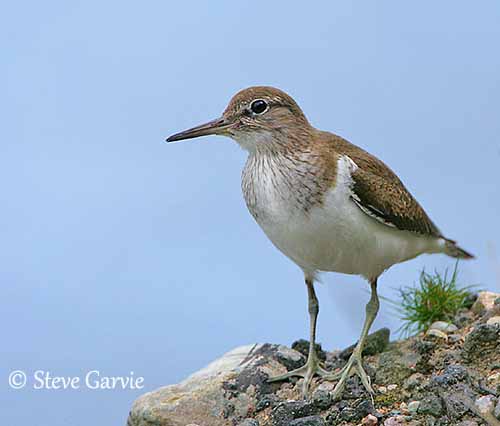
On the head, crown, nape and hindneck are greenish-brown. We can see a conspicuous white eyering and a whitish supercilium. There is an indistinct dark eye stripe from bill to hindcrown.
The bill is about 22-28 millimetres long. It is straight, mainly dark brown, with some dull greenish or brownish at base. The eyes are dark brown. Legs and feet are greenish to dull yellowish-brown.
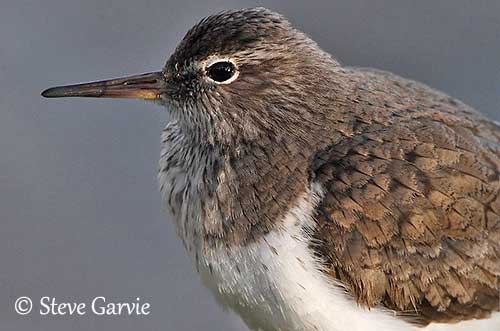
The female has similar plumage, but she is slightly larger than male.
The non-breeding adult has less streaked head, and slightly barred olive-brown upperparts. Neck and breast appear unstreaked.
The juvenile is similar to non-breeding adult, but the upperparts’ feathers show buff tips and bars.
RANGE:
The Common Sandpiper breeds in Europe, E across C Asia to Kamchatka, Sakhalin and Japan.
It winters from W Europe and Africa though Middle East, and S and SE Asia to Indonesia, New Guinea and Australia. It is irregularly seen on W Pacific islands.
HABITAT:
The Common Sandpiper breeds along flowing rivers and streams, and mostly in upland areas. It can be seen on margins with pebbles, sand or rocks, also in dry meadows close to ponds and lakes, and in sheltered coastal shores.
Outside breeding season, it frequents a variety of both freshwater and saltwater habitats including estuaries, salt-marshes, inland wetlands, pools and seacoasts. It also occurs on grassland and occasionally in urban or forested areas.
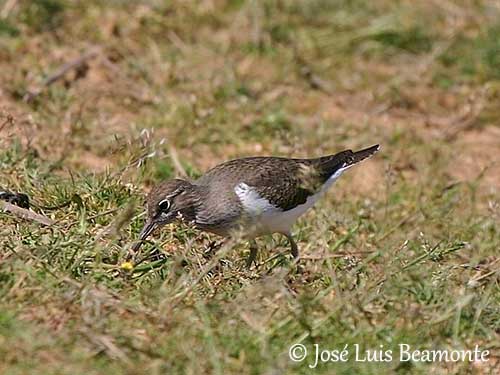
CALLS AND SONGS: SOUNDS BY XENO-CANTO
The Common Sandpiper’s call is a plaintive, ringing “swee-swee-swee” sometimes shorter, a single “sweet” when landing. If threatened, it gives a prolonged “sweee-eet”.
The bird is more vocal during the breeding season, and the song is a prolonged, excited medley of the call notes.
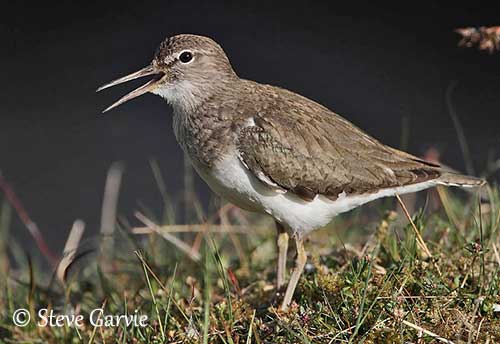
BEHAVIOUR IN THE WILD:
The Common Sandpiper feeds on aquatic and terrestrial insects and their larvae, but also spiders, molluscs and crustaceans, worms, and occasionally tadpoles, frogs and small fish.
It feeds on grassland or along roadsides, and locates the preys by sight. It forages in shallow water and on muddy and stony grounds. Its feeding action is slow. It bobs the head and flicks the tail up and down while walking about.
This behaviour is exaggerated when the bird is alarmed or wary of an approaching intruder.
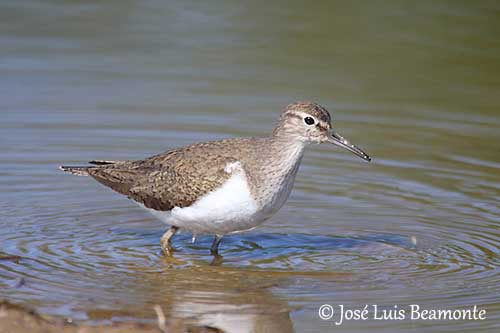
It walks along the water and picks invertebrates from rocks and mud, rarely by probing. It runs quickly. It catches insects with the head held horizontally and slowly extended before to perform a rapid snap to catch the prey.
The Common Sandpiper usually forages alone and often defends its feeding territory. However, they can be seen sometimes in small groups. It feeds during the day.
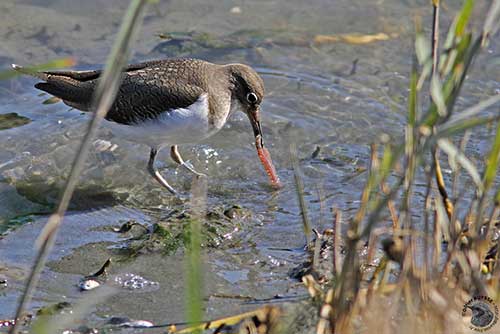
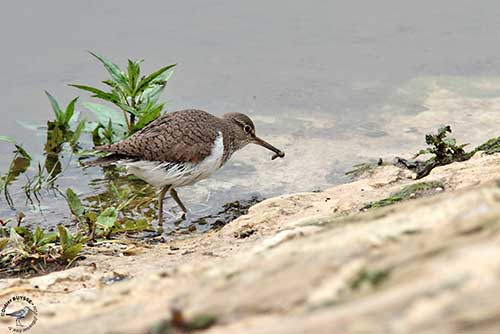
During the breeding season, both mates sing together, uttering loud trills and rhythmic songs. They perform aerial displays during which the male is chased by the female, often above water. They fly at great speed interspersed with glides on arched wings, occasionally with turns.
They usually arrive at their breeding grounds in pairs. They are monogamous.
Threatening displays by the male include a “salute” where it throws out one or both wings as a warning, before chasing an intruder off in territory defence.
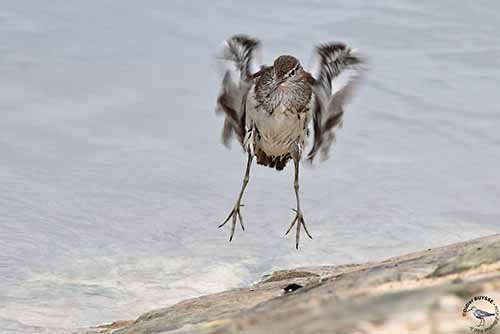
The Common Sandpiper roosts in flocks on rocks, in roots or branches of vegetation, especially in mangroves. It perches on posts, jetties, moored boats and artificial structures. It may sometimes rest on mud or rocks.
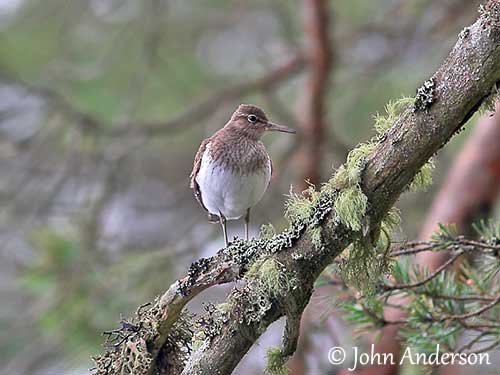
This species is migratory and moves S for the boreal winter. They migrate by night.
The western populations winter in Africa, whereas the eastern populations winter in S Asia to Melanesia and Australia. Some breeding birds stay in SW Asia during the breeding months.
The European birds leave their breeding grounds from mid-July to August and the juveniles one month later. They move N from late March to April.
The E Asian birds move through Korea, Japan, Hong Kong, Malaysia Peninsula, Wallacea and New Guinea. The immatures often remain in N wintering quarters all year round.
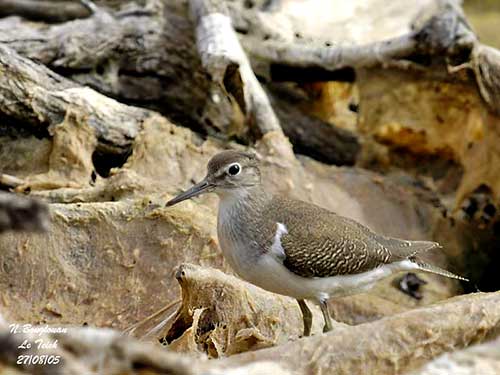
The Common Sandpiper flies usually low over water. It performs short glides on arched wings interspersed with flickering shallow wingbeats that do not raise much above horizontal level. Over long distances, it readily flies higher with stronger wingbeats.
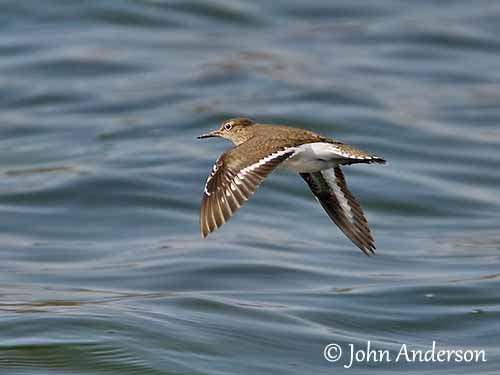
REPRODUCTION OF THIS SPECIES:
The Common Sandpiper breeds in spring with the laying in May-June.
They nest in scattered pairs with nests 60-70 metres apart in suitable habitat, near water including stony, fast flowing rivers, pools, lakes and sheltered seacoasts.
The nest is a shallow depression on the ground, lined with leaves and stems. It is sometimes placed in trees or shrubs, or on floating vegetation.
The female lays 3-5 yellowish eggs with dark markings. Both adults incubate during three weeks. The downy chicks are greyish-brown above, with some dark markings. They are raised by both parents, but the female often leaves before the young fledge, about 22-28 days after hatching.
The chicks leave the nest as soon as they are dry after hatching. They disperse away from the nest, hiding among the surrounding vegetation. The male does most of chick rearing.
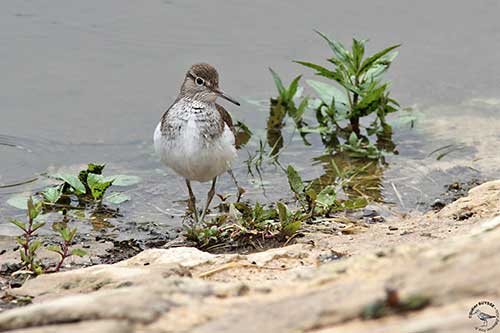
PROTECTION / THREATS / STATUS:
The Common Sandpiper has wide range and the overall population trend is decreasing, but some populations appear stable whereas others have unknown trends.
The global population is estimated to number 2,600,000/3,200,000 individuals (2006).
The Common Sandpiper is currently evaluated as Least Concern.
